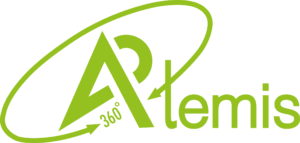ARtemis: Creating immersive training hubs for innovative didactic work-based learning settings
FLORINT’s ARtemis project aims to contribute to innovation in vocational education and training for florists. We want our industry to be ready for what the future is likely to bring. Together with our experienced project partners, we will develop immersive training hubs with 3D, AR and VR elements to create innovative didactic work-based learning settings. The project runs from 1 January 2022 until 30 August 2024, and is supported by an Erasmus+ grant from the European Union.
The Covid pandemic has accelerated the trend of digitalisation of labour markets. This has become very clear. The ARtemis project recognises this higher demand for digital and related skills, as expressed in the revised 2020 EU skills agenda, the Pact of Skills and the Digital Education Action Plan (2021-2027).
All of these plans focus on targeted policies that can facilitate the upskilling and reskilling of EU citizens. ARtemis supports vocational training staff in dealing with modern, digital tools, where there is currently little experience with new technologies like Augmented Reality, Virtual Reality, 360° videos and 3D (bio-) printing.
Aims of the ARtemis education project
The focus is on the integration of these new technologies in work-based learning settings / practical training. This will increase the digital readiness of the involved institutions towards the use of AR, VR, 360° video and 3D (bio-) printing. Resulting tailor-made teaching and learning materials will be developed, tested, evaluated, and transferred. This will result in the enrichment of existing, and implementation of new, communication and collaboration forms. The focus on green professions enables the development of relevant digital skills for teaching personnel in Vocational Education and Training (VET).
ARtemis emphasises the inclusion of participants with special needs like dyslexia, to study how mixed-reality experiences can help compensate for their reading difficulties. All activities are undertaken with equal opportunity and gender-neutrality in mind.
Project outcomes include the development of didactic guidelines, and the inclusion of the ARtemis technologies into work-based learning settings. This will culminate in a tailor-made qualification in the didactic innovation training hub for floristry.
Want to learn more?
For more detailed information about the aims and setup of the ARtemis project, please visit the official project website at: skillstools.eu/artemis/
ARtemis opportunities for staff and learners
ARtemis creates an opportunity for the further qualification of teaching and mentoring staff in floristry Vocational Education and Training. This supports the competence development of VET teachers with digital skills, to help implement newer teaching and learning approaches. It thereby contributes to increasing the attractiveness of the role of instructor.
The foundation is the provision of knowledge and the spreading of interesting, available technologies. The use of the ARtemis media can then lead to an increase in motivation and an improvement in the learning performance of trainees and students. This will benefit the profession tremendously.
ARtemis project outputs
| PROJECT OUTPUTS: |
|---|
| O1: Didactic guidelines for training staff in green professions |
| O2: Learning scenarios |
| 03: Immersive training hubs for AR/VR and 3D (bio-) printing for establishing innovative didactic WBL settings in green professions (“ARtemis hubs”) |
ARtemis project partners
Our partners in the ARtemis education project are:
- EUROPEAN LANDSCAPE CONTRACTORS ASSOCIATION – Belgium – www.elca.info
- SBG DRESDEN – Germany – www.sbg-dresden.de
- VEA Norwegian Green Vocational School – Norway – www.vea-fs.no
- NTI-MMM AS – Norway – www.ntim.eu
- As well as vocational schools in Denmark and The Netherlands.

This project has been funded with support from the European Commission.



